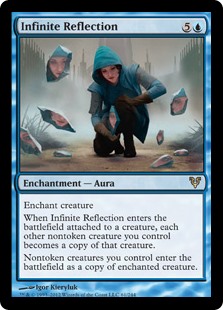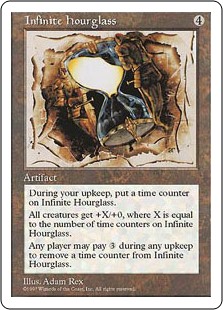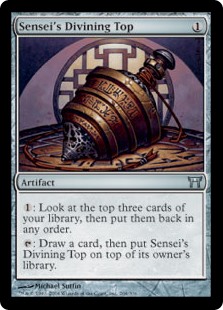OH BOY I'M BACK! BUSTING THROUGH YOUR SPOT LIKE THE KOOLAID MAN 'OH YEEEEAAAAHHHHH'
At long last, your old Grandpa Growth has returned. Long story short: my computer melted, but now I am back amongst the world of the internet living. I know you have all been waiting patiently for the return of Super Secret Sunday, the point in the space time continuum where we stop to reflect on underplayed cards, under the radar strategies, and under-thought thoughts. If you recall, last time we were talking about Investichantments. Cards that require a down payment, if you will, but ostensibly pay off later in the game. You can refer back to that post for the full discussion of what they are, how to use them, and why I typically avoid them. Here, I am going to offer a few more examples of investichantments that I can get behind and my thoughts on them.

This card is no stranger to the Commander tables. It is a solid game ender. If you have a squad of dudes you can make it a squad of your best dude. If your opponent has a great dude, then they are about to be in a world of hurt, watching in horror as you turn each one of your
Kelp tokens into
Inferno Titans. I like that this requires only a minimal investment in terms of time. Sometimes you just play it and attack for lethal with redundant copies of some silly monster. Even when the game goes longer, this card actually pays you back over the long run by letting you re-trigger ETB effects. This card is worth it. Don't laugh...it works.

It has been a long time since I turned over the hour glass. Literally and figuratively. I like how this card plays in aggressive token decks. It ticks up every turn, threatening ever growing amounts of damage. Now this card does have a punisher clause; letting your opponent choose to avoid the pain by spending mana, but this isn't so bad because it wastes their time (a resource that they don't have much of if you are beating down), requires a relevant amount of mana to keep the counters off, and doesn't solve the real problem (your brute squad).
I would like to finish the discussion of investments, by looking at a counter example. This card, affectionately dubbed The Top since the first pack of Champions was opened, has an iconic place in Magic history. It is seen in every format and can hardly be considered 'underplayed' in any format where it is legal. In fact, I argue the opposite. It is overplayed, horribly. It is even overplayed in modern, where hardly anyone plays it.
So why would I talk about an overplayed card in my series about underplayed tech? It is an investment, the topic of this article, and I have a soapbox. So I am going to use it.

Don't play this card. Seriously. You wouldn't put a random card in your deck that had nothing to do with your strategy or didn't synergize well with your other cards or didn't substantially improve your chances of winning would you? I have fielded all manner of arguments about how fantastic or how terrible this card is, some of which I agree with, some I don't. More than anything I think this is over blown. Most decks can't use it. Few decks really need it. It usually just slows down your mana curve by a full turn or so, which is a HUGE INVESTMENT for a very marginal increase in card quality. So many people look at this card and think about how much better drawing your best of three is than just drawing a random one. It is much better, but that is only half of the story. On the other hand, if you will, you hold straight up tutor effects. How much better is drawing the perfect card than drawing your best of three. Discarding a card at the beginning of the game to make you draw 3% better every turn for the rest of the game is only worth it if 1. The game goes on for a LONG time...or 2. your cards are all terrible (dead/narrow/low power/too slow/too expensive). So again I say: Don't play this card...unless you need it. If your deck is chock full of narrow answers, try to make smarter card choices. Pick cards that are more useful in the general case. If that isn't an option, say if you have a tool box package like Momir or Tinker strategies, then what you really need is powerful tutor effects, not the Top.
In short, the ROI needs to exceed the initial outlay within the breakeven period, otherwise it isn't worth investing in. If you're like most Americans and have no financial savvy whatsoever...then I would consider going to business school.
Pass it up.


You can't turn your kelp TOKENS into inferno titans idiot!
ReplyDeleteLove, Dakota